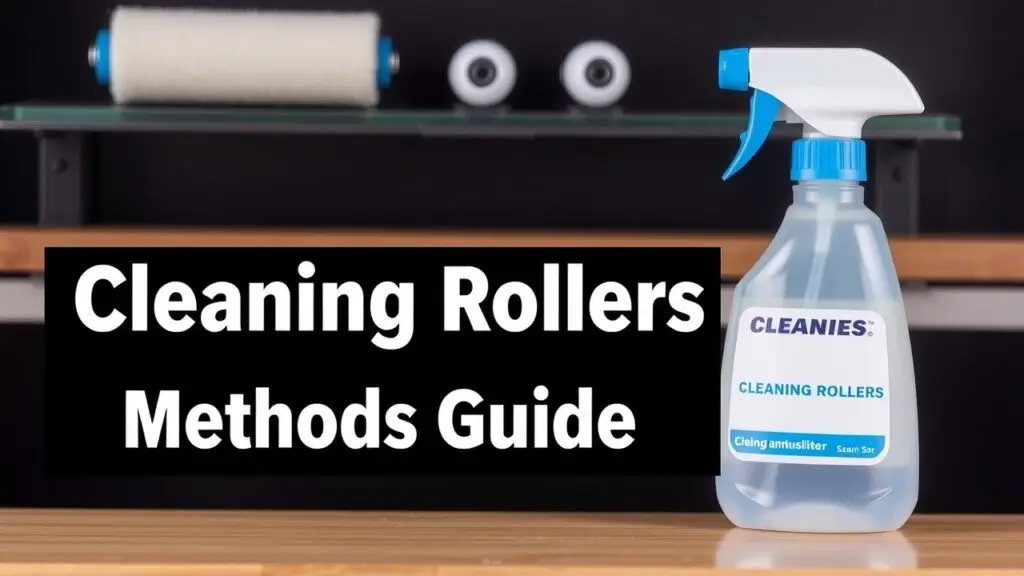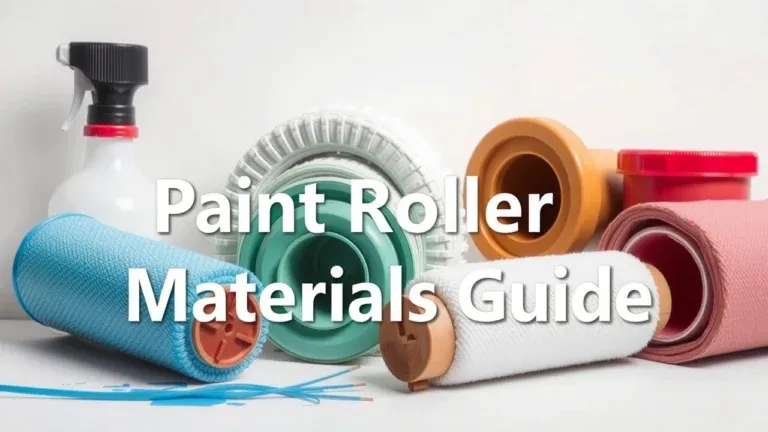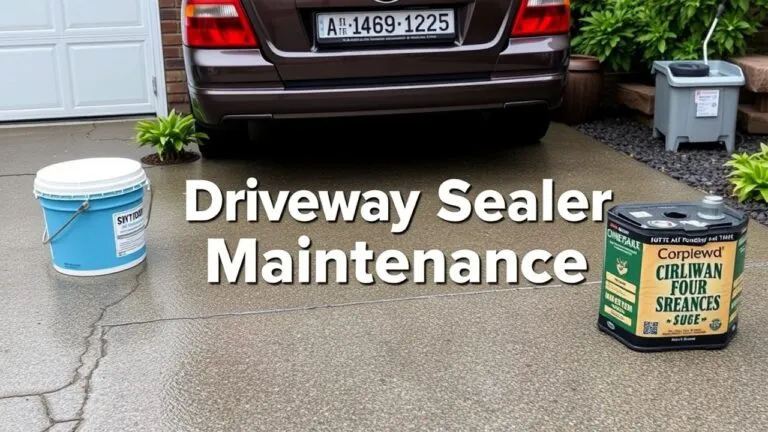The types of cleaning methods for rollers effectively depends on the roller type and soiling. This guide covers various methods, from basic solutions to specialized techniques like laser cleaning, for industrial, pinch, and rubber rollers.
What Are Rollers and Their Applications?

Rollers are round tools found in many industries. They help with tasks like painting, printing, and manufacturing. There are different types of rollers, including rubber rollers, urethane rollers, neoprene rollers, and pinch rollers. Each type has its job; for example, paint rollers spread paint evenly on surfaces, while ink rollers put designs onto paper or fabric.
Knowing what materials make up these rollers is key for cleaning them properly. For instance, cleaning rubber rollers often means using solvents to remove residues without harming the surface. Urethane rollers need gentler cleaners to avoid damage.
Why Is Regular Roller Cleaning Important?
Cleaning rollers regularly is important for keeping them in good shape and making them last longer. If they aren’t cleaned well or often enough, dirt and residue can build up. This can cause clogging or uneven application when you use them. It also makes the equipment wear out faster.
Setting up a cleaning schedule helps prevent these issues. By keeping your rollers clean and well-maintained, you can run your operations smoothly and save money on repairs or replacements later.
Types of Roller Cleaning Methods
There are several methods for cleaning different types of rollers based on their materials and how they are used:
- Solvent-Based Cleaning: This uses special chemical solvents that work well for removing oil-based paints or inks.
- Water-Based Cleaning: This method uses detergents that are good for water-soluble substances; it’s usually less harsh than solvent cleaning.
- Abrasive Cleaning: Here, physical scrubbing is done with brushes or pads that won’t damage the roller surfaces.
- Advanced Techniques: New methods like ultrasonic cleaners offer high efficiency but may require some training to use properly.
By knowing these different methods, users can pick the best way to clean their specific type of roller while staying safe during the process.
Solvent-Based Cleaning for Rollers
What Is Solvent-Based Cleaning?
Solvent-based cleaning means using chemical solvents to clean rollers. These solvents dissolve stuff like paint, ink, and glue that sticks to roller surfaces after you use them. Common cleaning solvents for rollers are isopropyl alcohol and naptha. These are strong cleaners that work well on tough spots that soap or water can’t handle.
When Should You Use Solvents for Roller Cleaning?
You should use solvents in certain situations where regular cleaning doesn’t work well. For instance, if you need the best cleaner for rollers or want to remove adhesive from rubber rollers, solvent-based cleaners are perfect. If your rollers have a lot of gunk built up, these cleaners break down those tough residues quickly and easily.
Step-by-Step Process for Using Solvents Safely on Rollers
When using solvent-based cleaners, safety is super important. Here’s how to do it safely:
- Personal Protective Equipment (PPE): Wear gloves, goggles, and a mask to keep yourself safe from harmful fumes and skin contact.
- Ventilation: Work in a place with good airflow to reduce risks from solvent vapors.
- Application: Put the solvent on the roller using a clean cloth or sponge.
- Scrubbing: Gently scrub the roller until all residue is gone. Don’t scrub too hard because it could damage the material.
- Rinsing: After cleaning, rinse the roller with warm water if it’s safe to do so (make sure it won’t damage the roller).
- Drying: Let the roller air dry completely before putting it away.
Following these steps helps you handle solvents properly while staying safe during cleaning.
Pros and Cons of Solvent-Based Cleaners
| Advantages | Disadvantages |
|---|---|
| They work great on tough residues | Can be dangerous if mishandled |
| Dry quickly | May harm some materials over time |
| Versatile for many kinds of messes | Need careful disposal |
Understanding these points can help you decide if using this type of cleaner is right for your needs when cleaning rollers effectively.
Water-Based Cleaning Methods for Rollers
What Is Water-Based Cleaning?
Water-based cleaning uses water and mild soaps to get rid of dirt on rollers, like rubber and urethane ones. This method works well because it’s less harsh than cleaners with solvents, making it safer for people and the planet. Common roller cleaning solutions include soapy water made with a mild detergent or distilled water mixed with soap. These solutions help keep the rollers in good shape while effectively removing paint, ink, or sticky residues.
When to Use Water-Based Cleaning?
Water-based cleaning is great for when you’re working with water-based paints or inks since they dissolve easily in water. This method also helps remove sticky substances from rollers without causing damage. If you see build-up on your rollers after using these products, using a gentle cleaner will keep them functional and last longer.
Step-by-Step Process for Water-Based Cleaning
- Gather Your Supplies: You will need a mild detergent, distilled water (or tap if needed), a bucket, and soft cloths or sponges.
- Mixing the Solution: Combine warm distilled water with a little mild detergent in your bucket to make soapy water.
- Cleaning: Soak a soft cloth in the solution and gently scrub the roller’s surface to wipe away any residue.
- Rinsing: Rinse the roller thoroughly under running clean water to remove all soap; this step is important because leftover soap can affect future uses.
- Drying Recommendations: After rinsing, dry the roller completely using another clean cloth or let it air dry before storing.
Following these steps helps you clean rollers properly and reduces the risk of damage.
Pros and Cons of Water-Based Cleaners
Water-based cleaners come with several benefits:
- They are generally safer for health compared to solvent-based options.
- They have a lower impact on the environment due to reduced toxicity levels.
- Many are easy-to-use and can be found almost anywhere.
However, there are some downsides:
- Some stains might not come off easily; tough residues may need extra scrubbing or different cleaning agents.
- Some people might find them less effective for heavy-duty industrial tasks that require stronger solvents.
Understanding how to use different cleaning methods for rollers is key to keeping your equipment working well while staying safe during use.
Abrasive Cleaning Methods for Rollers
What Is Abrasive Cleaning?
Abrasive cleaning is a way to clean rollers by using physical scrubbing tools. This method works well for tough stains that other cleaning methods, like solvents or water, can’t remove. You can use it on different types of rollers, such as rubber, urethane, and neoprene.
Suitable Tools for Abrasive Cleaning
To do abrasive cleaning effectively, you’ll need the right tools. Here are some common ones:
- Brushes: Specially designed for the roller material.
- Pads: Good for scrubbing larger areas.
- Toothbrush: A soft-bristled toothbrush is great for small spots.
Using the right roller cleaning supplies helps you tackle tough stains without hurting the surface.
When to Use Abrasive Cleaning?
You should use abrasive methods after trying to clean with solvents or water-based solutions if stains are still there. This is especially useful for situations like:
- Removing dried ink from rollers.
- Tackling adhesive left on sticky rollers.
Abrasive cleaning can help restore your roller’s performance in these cases.
Step-by-Step Process for Abrasive Cleaning Safely
- Preparation: Collect all your tools before you start.
- Testing: Always test a small area first to check for damage.
- Scrubbing Technique: Use gentle pressure when scrubbing; too much force can harm softer materials like rubber or urethane.
- Rinsing: Rinse the roller well with a suitable cleaner, ideally water-based if possible.
- Drying: Let the roller dry completely before using it again.
Pros and Cons of Abrasive Cleaners
Pros:
- Very good at removing tough stains.
- Can bring back the original look and feel of the contact surfaces.
Cons:
- There is a chance of damaging softer materials if not done carefully.
- It takes more effort than using chemical cleaners.
Knowing about abrasive cleaning methods helps you pick the right way to clean based on your needs while keeping your equipment in good shape over time.
Advanced Cleaning Techniques
Cleaning rollers is very important to keep them working well and lasting long. There are several advanced cleaning techniques that help with this. Each method has its own way of working, how well it works, where it can be used, and some drawbacks.
Ultrasonic Cleaning
Ultrasonic cleaning uses sound waves to create tiny bubbles in a liquid solution. These bubbles pop when they touch the roller’s surface. This helps to remove dirt and grime without hurting the material.
Effectiveness
This method is great for getting rid of tough residues like paint and ink because it reaches small spaces easily.
Applications
It’s commonly used in industries like automotive, electronics, and healthcare where precise cleaning is needed.
Limitations
One downside of ultrasonic roller cleaning is that it might not work on all materials. Delicate items can get damaged if they are cleaned for too long. Plus, the special equipment needed can be expensive.
Laser Cleaning
Laser cleaning uses focused laser beams to clean roller surfaces by removing unwanted substances. This technique cleans quickly by turning contaminants like ink or glue into vapor without touching the surface.
Advantages:
- Speed: Laser systems clean faster than many traditional methods.
- Effectiveness on Stubborn Residues: They handle tough stains that other methods can’t remove.
Disadvantages:
- Cost: Setting up laser technology can be quite pricey.
- Potential Damage Risk: If not used properly, lasers can harm sensitive surfaces or coatings.
Applications
This method is often found in industries where cleanliness and efficiency are key, especially with heavy machinery that needs careful maintenance.
Steam Cleaning
Steam cleaning uses hot steam to dissolve dirt and grime from rollers. It leverages heat while using fewer chemicals, making it more environmentally friendly compared to many solvent-based cleaners.
Applications
It’s perfect for fabric rollers found in textile production or anywhere needing gentle yet effective cleaning without harsh chemicals.
Effectiveness & Limitations
Steam is good at removing most contaminants, including oils and inks, but may struggle with dried-on substances. Also, too much moisture can cause problems like mold if not dried properly after use.
Additional Considerations in Advanced Roller Cleaning Techniques
Safety Precautions When Using Advanced Techniques
Safety always comes first when using advanced cleaning tools:
- Personal Protective Equipment (PPE):
- Wear gloves that resist solvents.
- Use goggles during laser operations.
- You might need respirators based on fumes from certain cleanings.
- Ventilation Needs:Make sure there’s good airflow when using chemical cleaners or machines that generate heat/steam; this helps avoid harmful exposure levels while keeping a safe workspace.
Understanding these advanced techniques along with their pros and cons—including safety measures—will help you take care of your rollers effectively in various situations while extending their lifespan through proper maintenance tailored to deal with different types of residues found in industry workflows!
Choosing the Right Cleaning Method: A Decision Tree
Cleaning rollers is key to keeping them in good shape and lasting longer. This guide will help you pick the best cleaning method for your rollers.
Identify Roller Material
Start by figuring out what material your roller is made of. Each type needs special care:
- Rubber Rollers: Common in printing, they require gentle cleaners to avoid damage.
- Urethane Rollers: These are tough and can handle stronger cleaners but still need proper care.
- Neoprene Rollers: They resist heat and chemicals better than rubber, needing specific cleaning solutions.
Knowing the types of roller materials helps you pick a suitable cleaning method.
Determine Substance to Be Removed
Next, think about what you need to clean off the rollers:
- Ink Removal: For ink stains, solvent-based cleaners work well since they dissolve ink without harming the roller.
- Adhesive Removal: For sticky substances, use stronger solvents or special adhesive removers.
- Coating Removal: If there’s a coating, like paint, use chemical strippers that are safe for both the material and environment.
Identifying the substance helps you choose an effective cleaner that fits your needs.
Evaluate Cleaning Options
After knowing the roller material and what needs cleaning, consider these methods:
| Cleaning Method | Description | Best Use Case |
|---|---|---|
| Solvent-Based Cleaners | Great at dissolving tough residues | Removing ink or adhesive |
| Water-Based Cleaners | Milder option suitable for general dirt | Light dirt or water-soluble paints |
| Ultrasonic Cleaners | Uses sound waves in liquid for deep cleaning | Intricate designs needing detail |
Your choice depends on how effective each method is against specific dirt while also considering the roller material.
Assess Environmental and Safety Considerations
Safety should be your top concern when cleaning. Different methods come with different safety rules:
- Use solvent-based cleaners in well-ventilated spaces to avoid breathing harmful fumes.
- You may need Personal Protective Equipment (PPE) like gloves and masks based on what products you choose.
Think about how your choice impacts the environment too. Pick eco-friendly options if you can, and follow disposal rules for used solutions.
Follow-Up Maintenance Recommendations
To keep your rollers lasting longer after you clean them:
- Do regular checks to spot wear or buildup.
- Set a maintenance schedule based on how often you use them—daily during busy times or weekly otherwise.
By following these tips along with using proper cleaning methods suited for each roller type and contamination, you can keep them working great while reducing risks from bad care practices.
Roller Cleaning: Best Practices and Safety Precautions
Cleaning rollers is super important for keeping them working well and lasting longer. Here are some best practices and safety tips to follow.
Pre-cleaning Steps
Before you start cleaning, make sure to remove any loose debris from the roller. This step stops dirt or leftover stuff from messing with your cleaning solution, which could make cleaning less effective. You can use a scraper or brush that’s made for your roller type to carefully knock off any stuck material. For paint rollers, clear off extra paint; for ink rollers, wipe away dried ink. Regular preventative roller maintenance helps keep everything in good shape by reducing buildup over time.
Proper Handling and Storage of Cleaning Solutions
When it comes to roller cleaning supplies, handling them right is key. Store all cleaning solutions in a cool, dry spot away from sunlight and heat. Always read the labels before using to understand any safety precautions for each product. Keep containers tightly closed when not in use to avoid spills or loss of strong smells.
Disposal of Waste Materials Responsibly
It’s important to dispose of used cleaning solutions the right way. Follow local guidelines on how to handle chemical waste safely. Many places have rules about how to get rid of hazardous materials—check out local resources for specific details on how to dispose of used cleaning solutions responsibly.
Regular Maintenance Schedule
Setting up a regular maintenance schedule is important for preventing buildup on your rollers. Depending on how often you use them, think about making a roller maintenance checklist that says when each type should be cleaned—this could be daily after heavy use or weekly during lighter workloads.
Testing Cleaning Solutions
Before you go all out with a cleaner on your rollers, always test it first on a small area that’s not very noticeable (like the edge). This lets you check its effectiveness without risking damage or fading over larger areas—a mistake many people make when trying new products.
Importance of Thorough Rinsing and Drying
After washing your rollers well with suitable cleaners, rinsing is super important! It helps remove any leftover soap or solvent residues that might mess with future applications. Make sure to dry them completely using air drying methods or soft cloths designed for this purpose; any moisture left can lead to mold growth later.
Safety Precautions
Put safety first while cleaning rollers! Wear personal protective equipment (PPE) like gloves and goggles if you’re using solvent-based cleaners that have strong fumes or can irritate skin. Also, ensure good ventilation in your workspace—open windows when possible—and think about using fans if you’re exposed to these chemicals for a long time.
By sticking to these best practices along with necessary safety measures throughout each step—from pre-cleaning through final storage—you’ll boost both efficiency in keeping various types of rollers clean and help maintain health standards at work.
Frequently Asked Questions (FAQs)
What are some effective cleaning methods for rollers?
Effective methods include solvent-based cleaning, water-based cleaning, and abrasive techniques. Each method works best for specific roller types and materials.
How can I clean anilox rollers properly?
To clean anilox rollers, use specialized anilox cleaners designed to remove ink residue effectively. Follow up with a thorough rinsing to prevent contamination.
What is the best way to remove dried ink from rollers?
Use solvent-based cleaners for dried ink removal. Apply the solvent, scrub gently, and rinse thoroughly. This method effectively loosens stubborn residues.
What are the common mistakes in roller cleaning?
Common mistakes include using incorrect cleaners, not rinsing properly, and failing to clean immediately after use. These can lead to damage or ineffective cleaning.
How often should industrial rollers be cleaned?
Industrial rollers should be cleaned regularly based on usage. A daily or weekly schedule is ideal for maintaining performance and preventing buildup.
Can I use ultrasonic cleaning for my rollers?
Yes, ultrasonic cleaning is effective for intricate designs and removing tough residues. Ensure compatibility with your roller material before using this method.
What type of solvents should I use for roller cleaning?
Choose solvents that match your roller type. For rubber and urethane, mild options work well; for ink rollers, stronger solvents may be necessary.
How do I dispose of used roller cleaning solutions?
Follow local regulations for disposing of hazardous waste. Avoid pouring chemicals down drains; instead, use designated disposal sites or collection events.
Types of Roller Cleaning Techniques
- Chemical Cleaning: Uses chemical agents to dissolve residues. Ideal for heavy-duty applications.
- Mechanical Cleaning: Involves scrubbing tools like brushes or pads for physical removal of dirt.
- Manual Cleaning: Performed by hand using cloths or sponges for detailed care.
- Automated Roller Cleaning: Machines handle the cleaning process efficiently; reduces labor costs.
- CIP Cleaning: This “clean-in-place” method allows systems to be cleaned without disassembly.
- Deep Cleaning Procedures: Focus on thorough removal of all contaminants from all surfaces.
- Food-Safe Cleaners: Specially formulated cleaners ensure safety in food industry applications.
- Cleaning Roller Sleeves: Utilize specific products designed to clean roller sleeves without damage.
- Maintaining Roller Hygiene: Regular cleaning prevents contamination across various applications.
- Roller Restoration Techniques: Methods used to restore old or damaged rollers back to usable condition.
Related Topics
- Types of Rollers
- Types of Cleaning Solvents
- Types of Roller Materials
- Types of Residues on Rollers
- Types of Cleaning Solutions for Rollers
- Types of Advanced Cleaning Techniques
- Types of Roller Cleaning Mistakes
- Types of Industrial Rollers
- Types of Cleaning Equipment for Rollers
- Types of Roller Cleaning Schedules
- Types of Personal Protective Equipment (PPE) for Roller Cleaning



Types of Cleaning Methods for Rollers: A Complete Guide